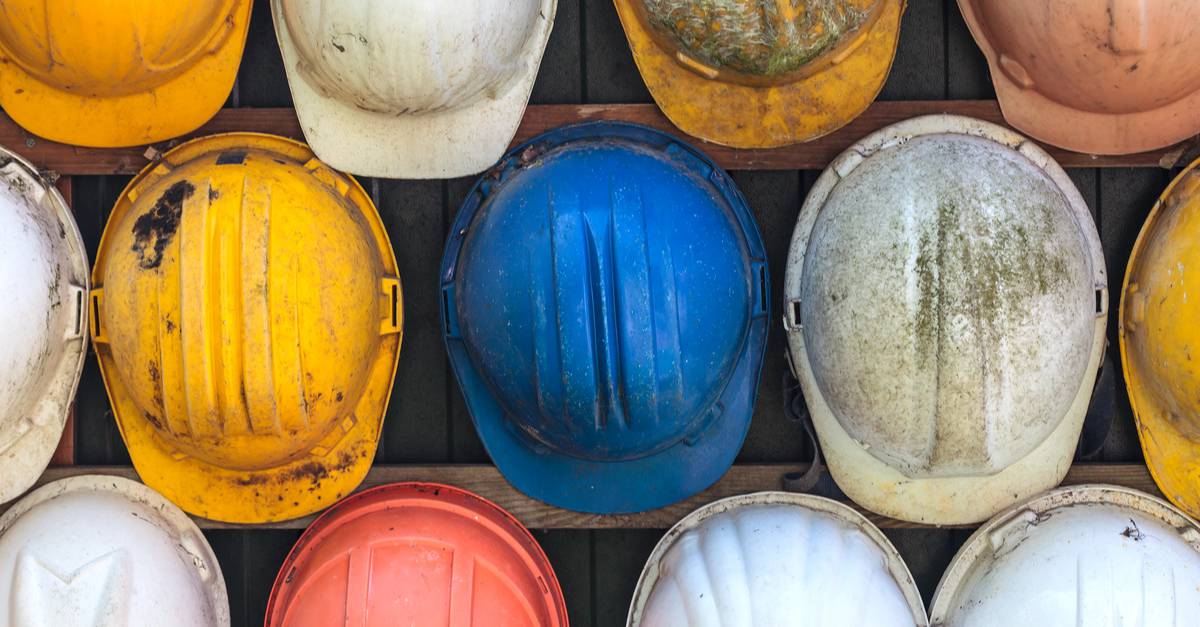Construction sites are dangerous places. Safety hazards lurk around every corner. This is evident by the high rate of occupational fatalities and injuries that occur each year in construction. Falls, electrocutions, heavy equipment rollovers, and collapsing scaffolding are just a small number of ways workers can be seriously injured or killed on a construction site.
Construction firms that have achieved excellent safety records didn’t get them by accident. They aren’t lucky. These companies have made safety a key tenet of their company culture and have established proven safety programs that help them attain a goal of creating a zero accident work environment to protect their employees.
Building safer construction sites isn’t easy. It takes a tremendous amount of planning and work. Here are a handful of tips and advice to making every construction site safer.
Establish a Safety Culture
Safety should be the top priority for all construction companies. Getting all employees to buy-in to your safety culture requires a top-down approach. “Safety First” can’t just be lip service delivered to workers from the higher-ups. A commitment to safety must be incorporated as one of the core principles of your company’s culture.
Assemble a safety team or committee to help your safety manager oversee and review safety performance. The team should include a mix of executive, managerial, operational, and craft labor staff. This helps reinforce the fact that safety is the responsibility of every employee.
Create a Site-Specific Safety Plan
Every construction project is different and comes with its own unique set of challenges and obstacles. Construction planning is a vital task in successfully managing a project to completion. It requires determining the resources needed and scheduling the work based on the order and duration it will take to complete individual tasks.
Part of the construction planning process should include developing a site-specific safety plan. Start off by inspecting the site and determining what hazards already exist. Plan out what safety measures to implement to mitigate those hazards and prevent accidents.
As the construction plan is created take a look at each phase of construction. Break down the individual tasks involved and write out what safety measures, personal protective equipment (PPE) and training will be required to keep workers safe.
Share the plan with everyone working on the site. Be sure to emphasize the expectation that everyone will follow the plan. This extends to not only your employees, from site supervisors down to construction helpers, but everyone working on the job including your subcontractors.
Training
Safety training isn’t a one and done deal. This goes for new hires and seasoned veterans alike. Ongoing training helps ingrain that safety culture into the minds of all employees. No accident ever occurred because someone had too much safety training.
Conduct a safety orientation for all employees fully review all expectations and safety requirements. Be sure to cover evacuation procedures and first-aid plans. Workers should be trained not just on how to do a task correctly, but how to perform that task safely to protect themselves and those around them.
Empower Workers to Speak Up & Hold Each Other Accountable
Each and every person on the jobsite should feel comfortable speaking up when they observe unsafe working conditions. Everyone on the construction site, regardless of whether their position is safety manager or construction laborer, should have the ability to order work stopped if they feel there is a safety issue that needs to be addressed.
Emphasize to all workers that they are responsible for keeping themselves safe as well as those around them. Workers won’t speak up about unsafe conditions or behaviors if they fear retaliation for doing so.
Conduct Daily Safety Meetings
To stress the importance of safety, talk about it every day. These don’t have to be long and overcomplicated. Before the start of each shift, review the work being done that day and discuss the hazards involved and the safety measures and controls in place.
Be sure to discuss any accidents or near misses that have occurred during the previous shift. Highlight any instances where workers were not following safety protocols as well as instances where workers were observed working safely.
Have each employee inspect their PPE, tools, and equipment before beginning work to ensure everything is in good working order. Address any and all safety concerns that workers have before allowing work to begin.
Inspect, Evaluate, and Adjust
Construction sites should be inspected before and after each workday. Equipment and tools should be inspected to ensure all guards and safety controls are in place. Scaffolding and ladders should be inspected to confirm they are in good working order and safe to use. The site should be clean and well-kept to avoid workers tripping over misplaced tools and discarded materials.
As construction progresses, the safety manager and safety committee should evaluate the safety plan. Discuss what measures are working, determine what areas need to be addressed and where additional training may be needed. New safety hazards will occur as work progresses so it is important to adjust the safety plan as needed when work conditions change.
With careful planning and implementation, it’s possible for all construction sites to achieve a goal of creating a zero injury environment at every construction site.
Need more project leads? ConstructConnect finds you the best construction projects to bid on and win more work.

